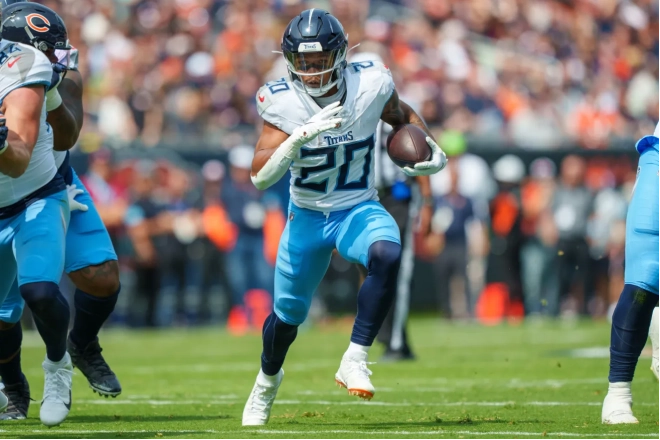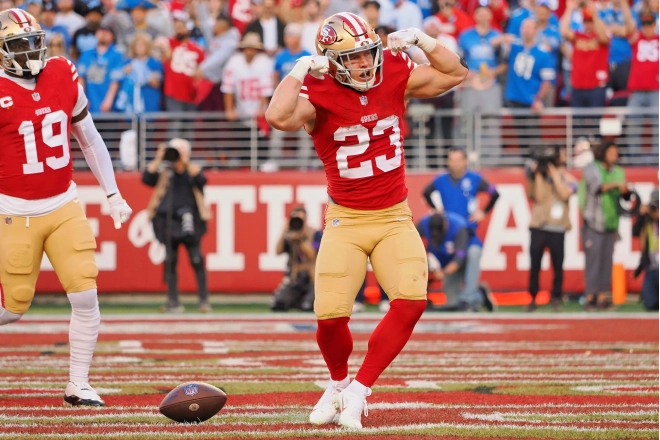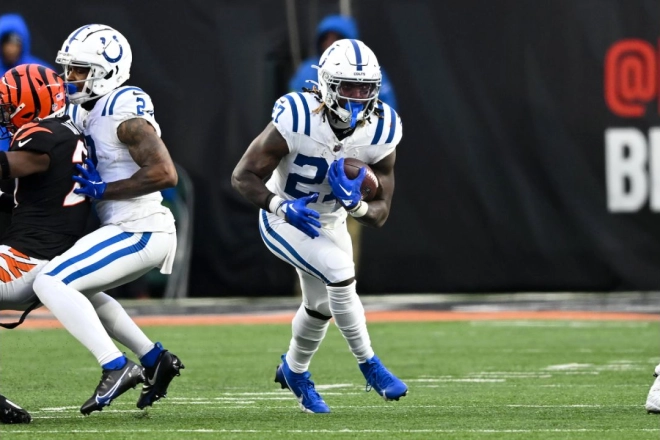June marks a crucial period for dynasty fantasy football managers as organized team activities (OTAs) and minicamps get underway. These sessions provide early glimpses into player roles, team dynamics, and potential breakout candidates. Evaluating the news and developments from OTAs and minicamps can help you stay ahead of the competition and make informed decisions to bolster your dynasty team. This article will guide you through the process of evaluating these early sessions, tracking player progress, and adjusting your strategy accordingly.
OTAs and minicamps are essential parts of the NFL offseason, allowing teams to practice and build chemistry without the pressure of game situations. Here's what they entail:
OTAs (Organized Team Activities): Typically held in late May and early June, OTAs are voluntary workouts that include on-field practice sessions, weight training, and team meetings. Although these sessions are not mandatory, they are crucial for players to familiarize themselves with playbooks, improve their conditioning, and work on their skills.
Minicamps: Held in mid to late June, minicamps are mandatory for all players. These sessions are more intensive and structured than OTAs, featuring full-team practices, position drills, and scrimmages. Minicamps provide a clearer picture of team strategies and player roles heading into training camp.
To make the most of the information emerging from OTAs and minicamps, follow these steps:
Monitor Team Reports and Beat Writers: Stay updated with reliable sources like team websites, beat writers, and reputable NFL reporters. These sources offer firsthand information about player performances, position battles, and coaching decisions.
Identify Key Storylines: Focus on the most impactful storylines, such as emerging rookies, player injuries, and position battles. This will help you filter out the noise and concentrate on the news that could significantly affect your dynasty team.
Analyze Player Performances: Look for consistent positive reports about players, especially those competing for starting roles or significant playing time. Consistency in performance and praise from coaches can be indicators of a player's potential breakout.
Track Injuries: Injuries during OTAs and minicamps can affect player availability for the upcoming season. Pay close attention to injury reports and recovery timelines to adjust your roster and draft strategies accordingly.
Track Player Progress: Keeping tabs on player progress during OTAs and minicamps is vital for identifying breakout candidates and making strategic adjustments. Here's how to do it effectively:
Rookies and Second-Year Players: Rookies and second-year players often make significant strides during OTAs and minicamps. Monitor their performances closely to gauge their readiness for the NFL and their potential impact on your dynasty team.
Veteran Players in New Roles: Veteran players adjusting to new roles or teams can offer valuable insights. Assess how well they are adapting and whether they are receiving positive feedback from coaches and teammates.
Position Battles: Position battles during OTAs and minicamps can determine the pecking order for playing time. Track these battles to identify potential starters and depth chart changes.
Skill Development: Players working on specific skills, such as route running, pass blocking, or tackling, can indicate their commitment to improving. Note any standout performances in these areas as they can translate to increased playing time and production.
Based on the insights gained from evaluating OTAs and minicamps, you can make informed decisions to adjust your dynasty strategy. Consider the following actions:
Target Emerging Players: If a player is consistently receiving positive reports and showing potential, consider targeting them in trades or waiver pickups. Early identification of breakout candidates can give you a significant edge.
Reevaluate Draft Rankings: Adjust your rookie and dynasty draft rankings based on the latest information from OTAs and minicamps. Players who are impressing early may warrant a higher selection, while others struggling might need to be downgraded.
Monitor Depth Charts: Pay attention to depth chart changes and position battles. Players climbing the depth chart could offer excellent value, while those falling might need to be reconsidered in your strategy.
Injury Management: Adjust your roster and draft strategy based on injury reports. Consider handcuffing key players or targeting their backups to mitigate injury risks.
In addition to following the news and adjusting your strategy accordingly, identifying potential breakout candidates early can be a game-changer for your dynasty team. Here are some tips to spot these players:
Consistent Positive Reports: Players consistently praised for their performances and work ethic are likely to carry that momentum into the season.
Opportunities for Increased Playing Time: Look for players who have a clear path to increased playing time due to injuries, trades, or departures of other players.
Versatility and Unique Skill Sets: Players with versatile skill sets or unique abilities (e.g., dual-threat quarterbacks, pass-catching running backs) can offer significant upside.
Coach Speak: Pay attention to comments from coaches regarding players' roles and expectations. Coaches often provide valuable insights into how they plan to utilize certain players.
Additionally, not all news from OTAs and minicamps is straightforward. Some situations require closer monitoring to make informed decisions:
Ambiguous Position Battles: When multiple players are vying for the same position, it can be challenging to determine the eventual starter. Monitor these battles closely throughout the offseason.
Injury Recoveries: Players recovering from injuries may have varying timelines and levels of effectiveness upon return. Keep a close eye on their progress and any setbacks.
Coaching Changes: Teams with new coaching staffs may implement different schemes and philosophies. Evaluate how these changes affect player roles and team dynamics.
Contract Disputes: Players holding out for new contracts or facing potential trades can impact their availability and performance. Stay updated on contract negotiations and potential trade rumors.
To illustrate how to evaluate OTAs and minicamps, let's look at a few examples:
Rookie Wide Receiver: A highly-touted rookie wide receiver impresses during OTAs with his route running and catching ability. Coaches praise his work ethic and potential to contribute immediately. Dynasty managers should consider targeting him in drafts or trades, as his early performance suggests he could be a valuable asset. However, keep in mind that due to rookie hype, this player could be expensive to acquire, and may not be worth the cost. Real life example: Malik Nabers - New York Giants
In a situation like this, I'd rather go after a rookie who ISN'T doing well in OTA's, as the owner who drafted such rookie may already be panicking a bit about the rookie's chances to be fantasy relevant. At the very least, struggling rookies are worth sending out a trade flyer just to see what the other owner might want.
Veteran Running Back: A veteran running back in a new team struggles during minicamps, showing signs of decline. Coaches hint at a committee approach in the backfield. Dynasty managers should reevaluate their expectations for the veteran and consider acquiring his backup or other running backs on the team. Real Example: Aaron Jones - Minnesota Vikings
Despite the fact that the veteran RB may be struggling during training camp, don't be shy about digging deeper and researching the player further, as OTA news is traditionally fluid and often changes daily. With veteran RB's, it may not be a bad time to consider acquiring such cheap assets from other managers if possible, as you may be able to get the player at a discount relative to before OTA's began.
Quarterback Competition: Two quarterbacks are competing for the starting job, with both receiving mixed reviews during OTAs. One quarterback shows flashes of brilliance but struggles with consistency, while the other is steady but unspectacular. Dynasty managers should monitor this competition closely, as the eventual starter could offer significant value, especially in Superflex leagues. One may also want to consider picking up or trading for the backup or perceived backup, as that player may have experienced a temporary drop in value, thus potentially making them easier to acquire for the time being. Real Example: Drake Maye - New England Patriots
Evaluating OTAs and minicamps is a critical component of dynasty fantasy football management. By staying informed, tracking player progress, and adjusting your strategy based on early insights, you can gain a competitive advantage and set your team up for success. Remember, the key is to focus on reliable sources, identify key storylines, and make data-driven decisions. As the NFL offseason progresses, continue to monitor developments and refine your approach to stay ahead of the competition. One final thing to remember (and this is the MOST important): never over-evaluate the news coming out of OTA's and camps, as 95% of this news will have NO impact whatsoever during the regular season. We are still 2 MONTHS away from Week 1. To that end, generally speaking this is a GREAT time to use the OTA news to your advantage and either trade away overhyped players or acquire others that may be a bit under the radar. Just be cognizant that most of the other owners are trying to capitalize on the OTA hype and you don't get caught up in it.
In the ever-evolving world of dynasty fantasy football, staying proactive and informed is essential. Embrace the insights from OTAs and minicamps, and use them to build a championship-caliber dynasty team. Happy scouting, and may your dynasty reign supreme!





